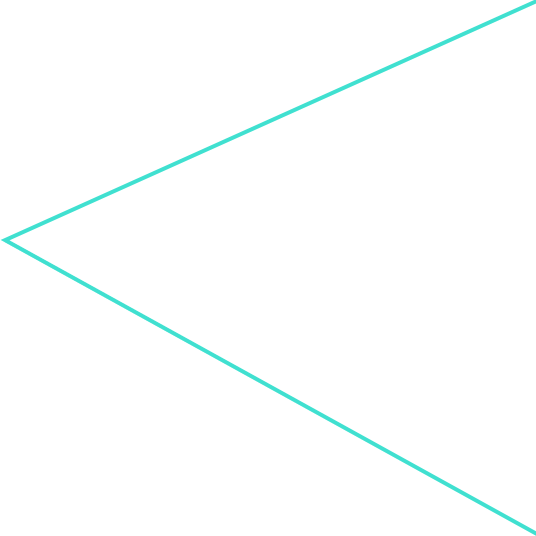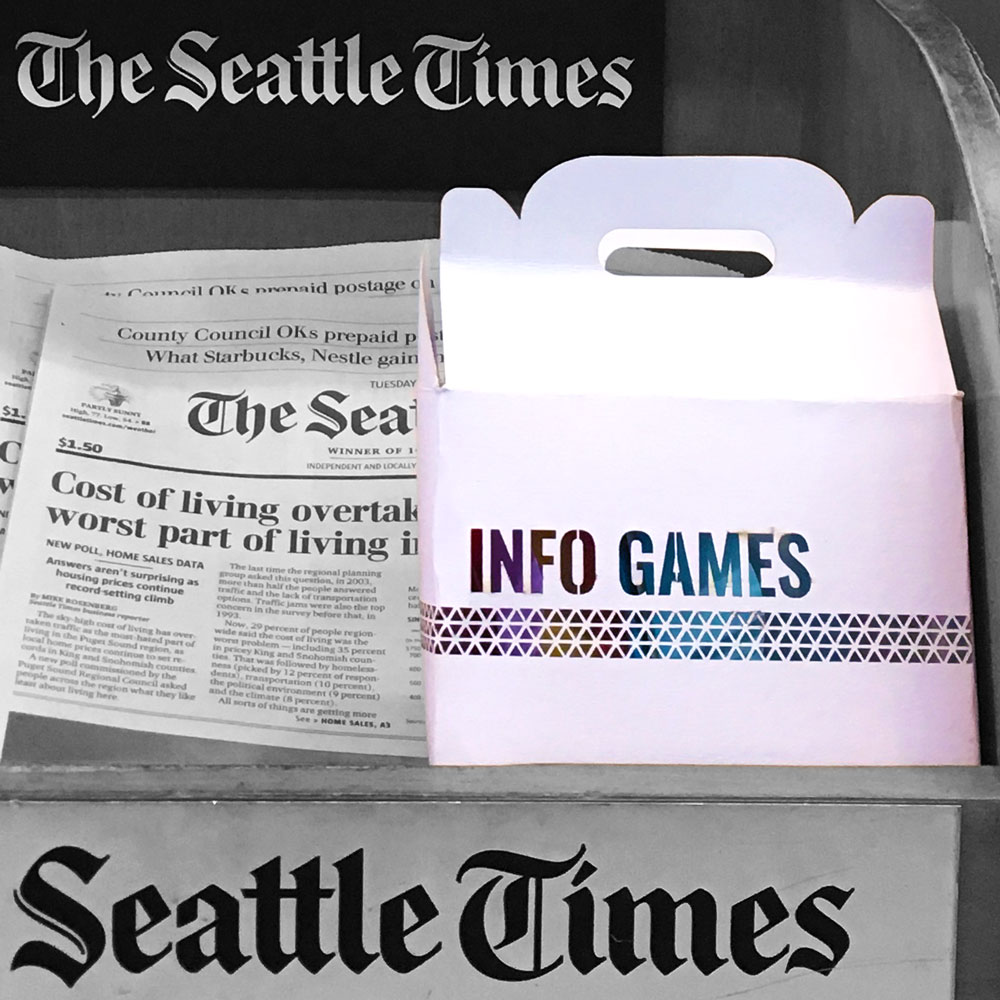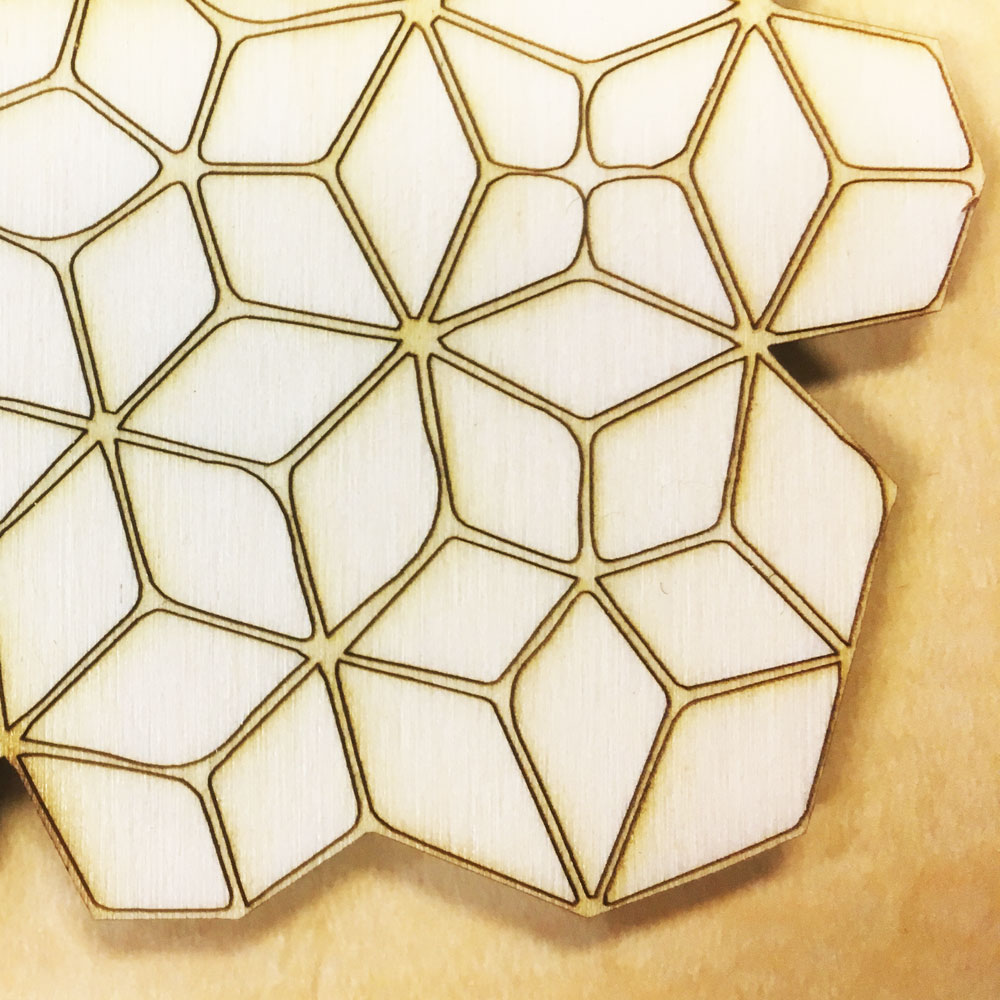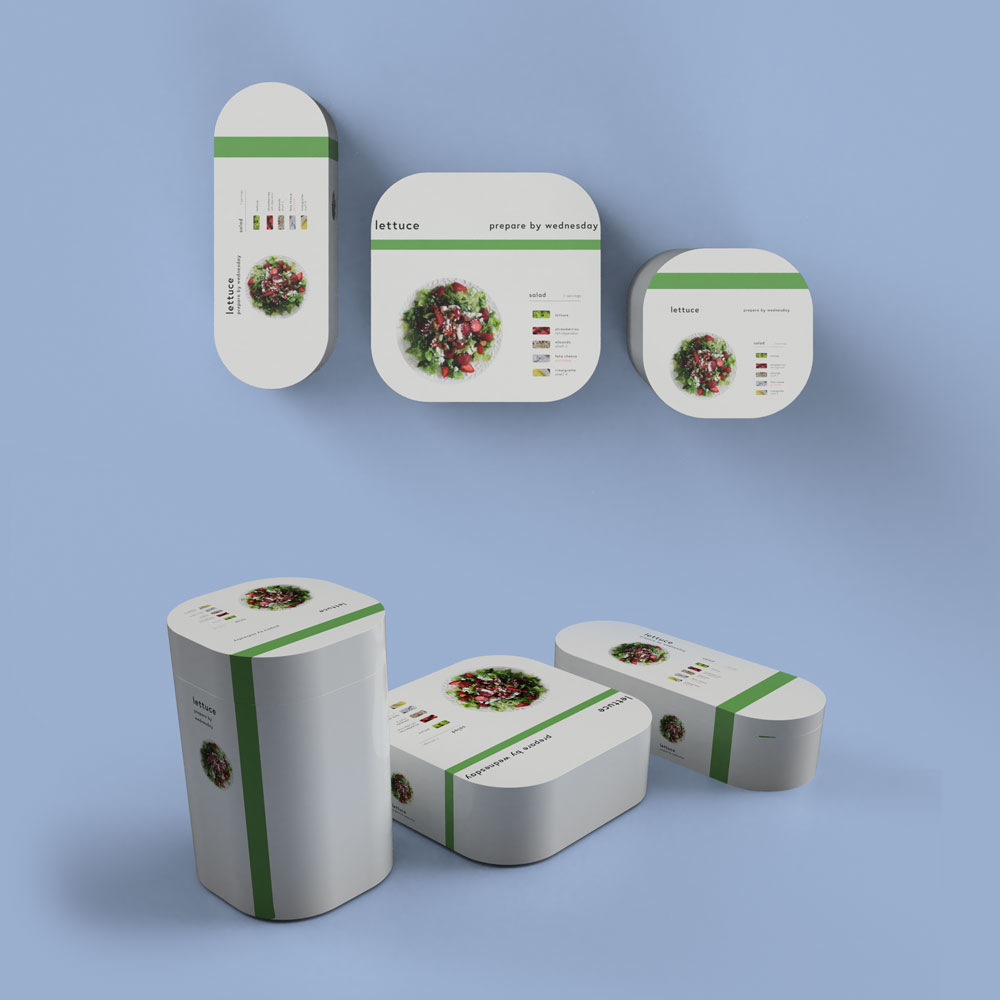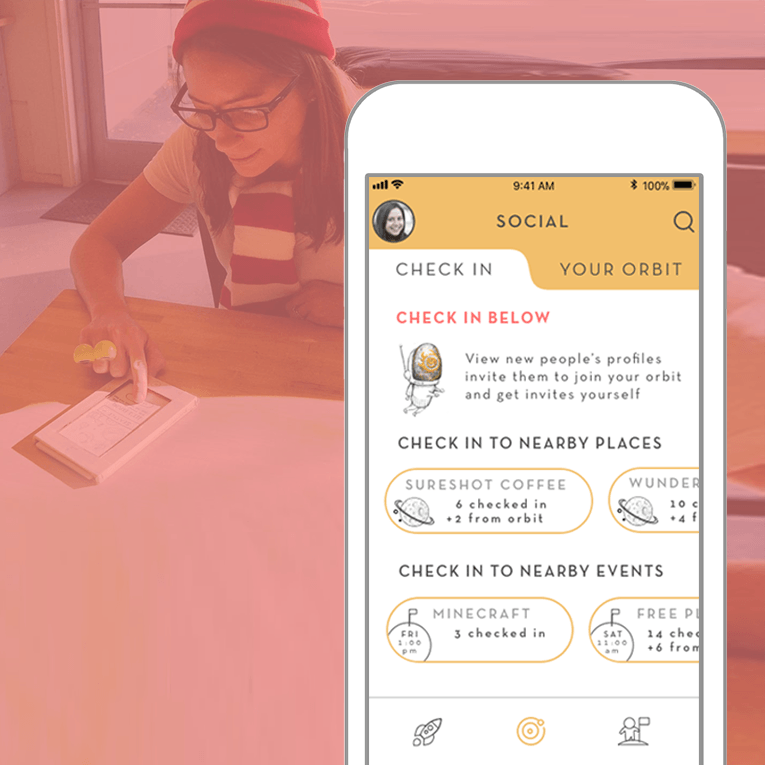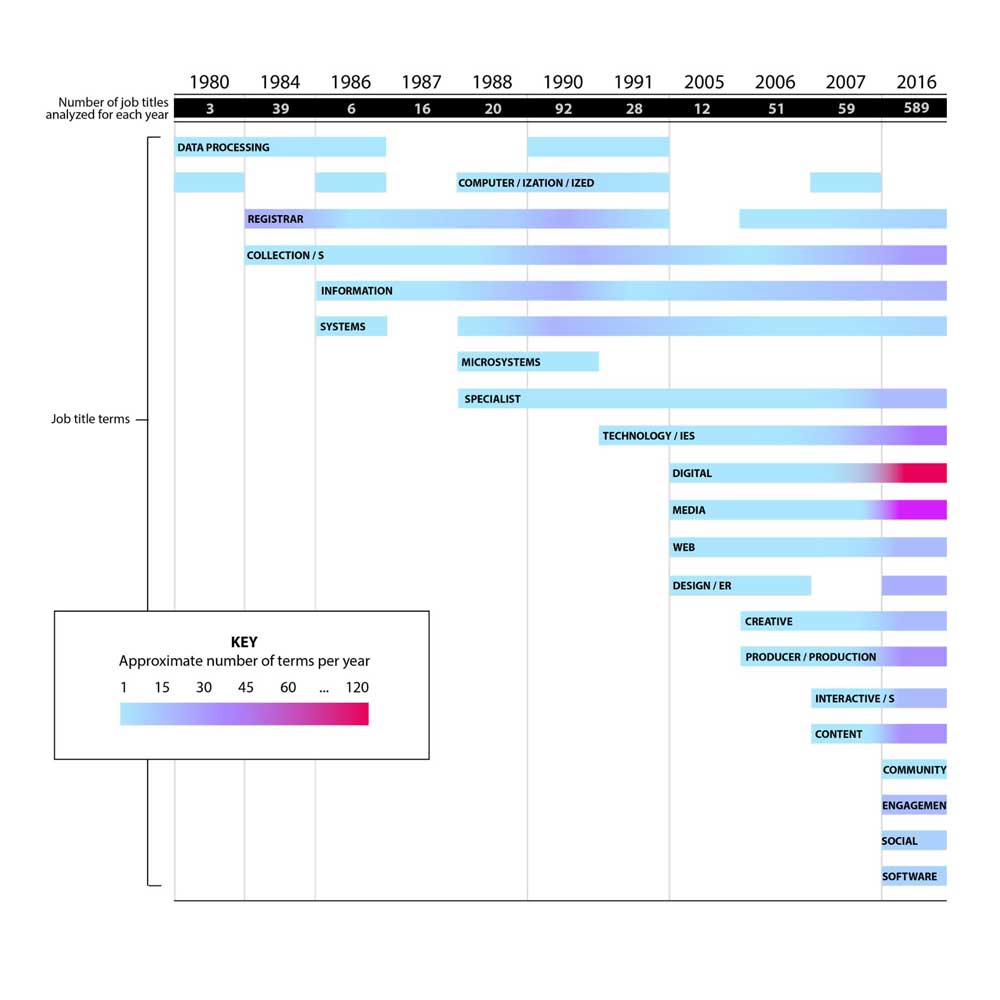Turrim: VR for personal finance
VR helps people slow down and embody their choices. We brought this interaction pattern to personal finance.

Independent Project3 monthsDesign, testing, prototyping |
TeamSarah Outhwaite > Story & visualsBrian Nguyen > Interactions |
Shared rolesUnity prototyping & codingUser testing |
Turrim helps users create durable mental models of their personal finances, by leveraging embodied cognition.
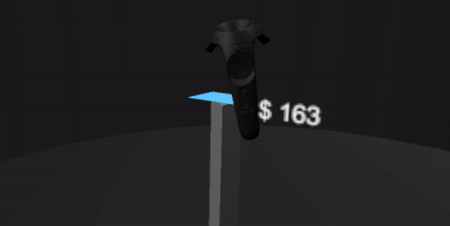
Hands-on with spatial UI
This winter, I teamed up with fellow spatial enthusiast Brian Nguyen to get our hands dirty in VR.
Under the guidance of Professor Batya Friemdan, we built and tested a working prototype of our design concept for the HTC Vive. Friedman helped us surface the qualities of duration, attention, and time representation in our work.
Coding
Brian and I worked together in C# to code our Unity interactions.
I set up a code taxonomy to help us coordinate on different elements.
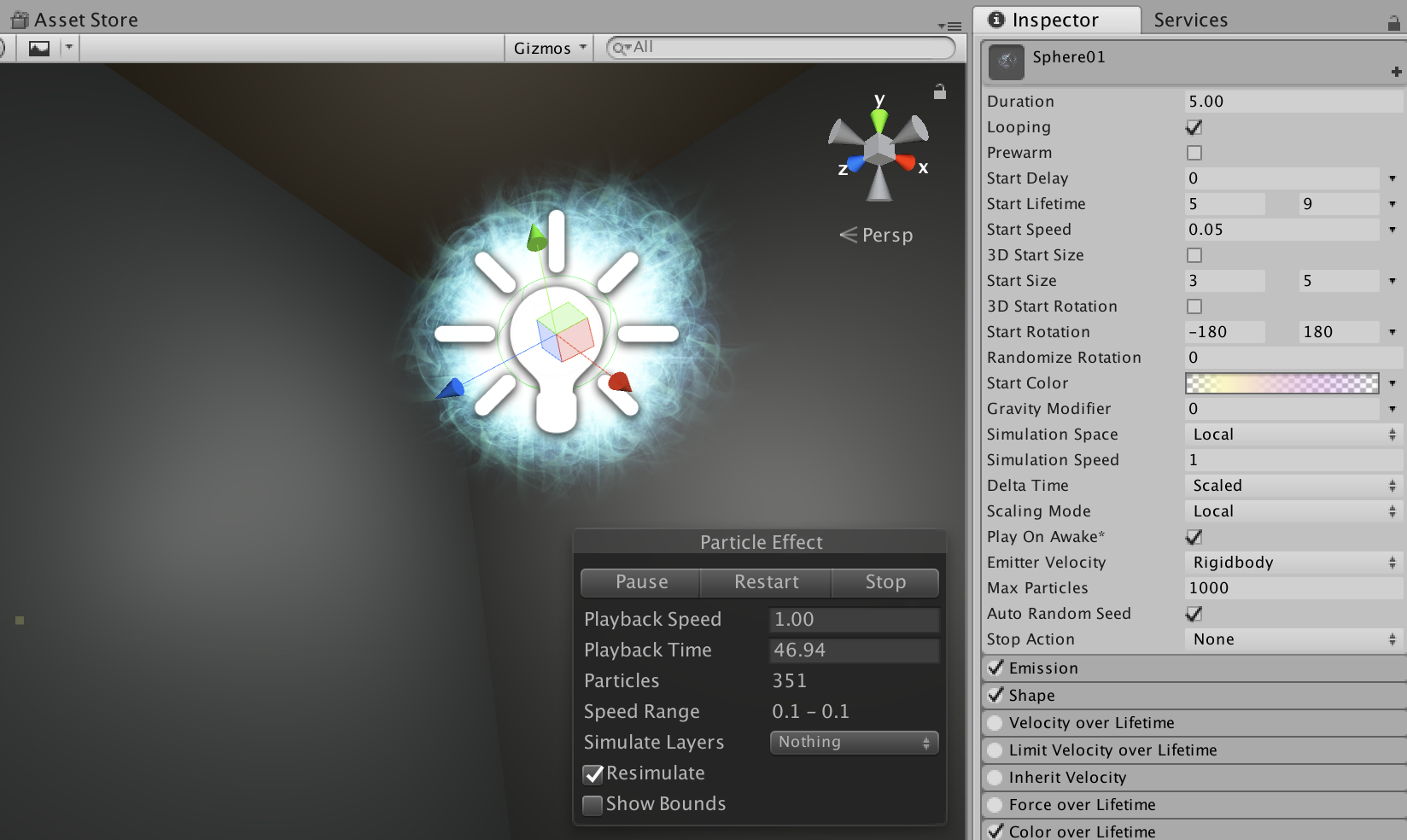
Hitting a moving target
Every daily purchase moves the bar on future purchase goals.
Users in our peer group reported relying on convenient mobile apps to check their finances, rather than seeking ways to understand and remember their financial status.
Opportunity
Physical environments can be spectacular, while full-bodied interactions engage our natural spatial and procedural memory strengths.
We decided to design a financial app for delight and focused engagement, rather than frictionless convenience.
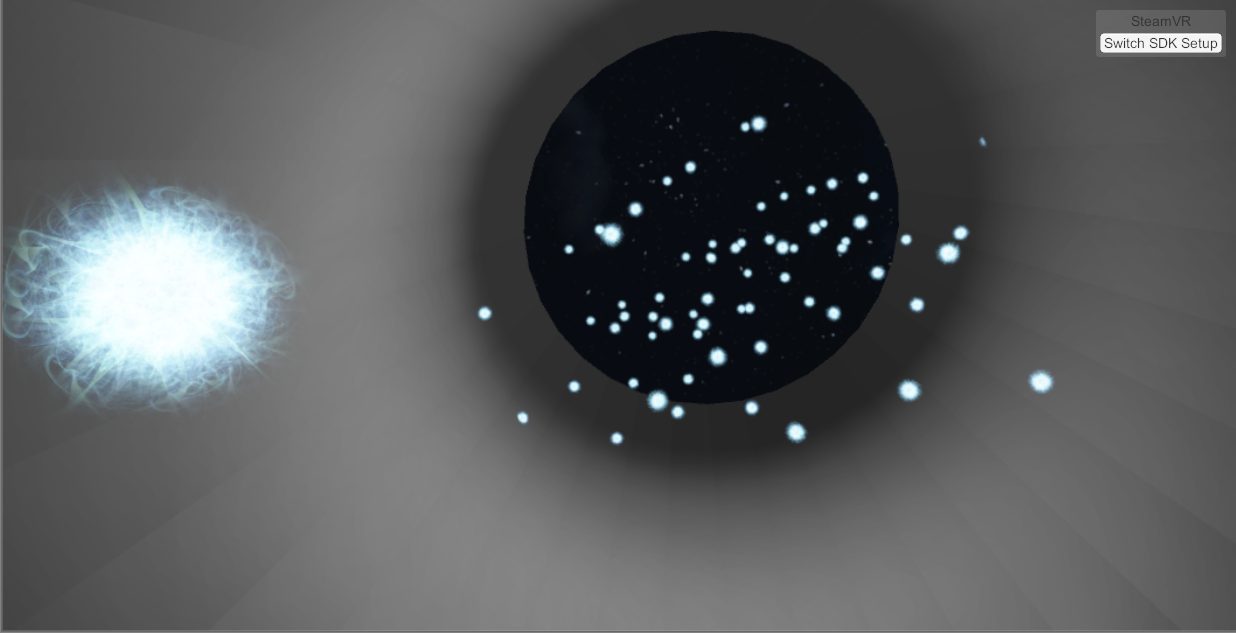
Rethinking design process for spatial interactions
I did initial concept sketches on paper, but switched over to the painting app TiltBrush to "sketch" and ideate in VR once we'd found our narrative.
There are qualities of 3D space that only come across in . . . 3D space ( ;
Generating models in TiltBrush was an invaluable, fast way to get that context.
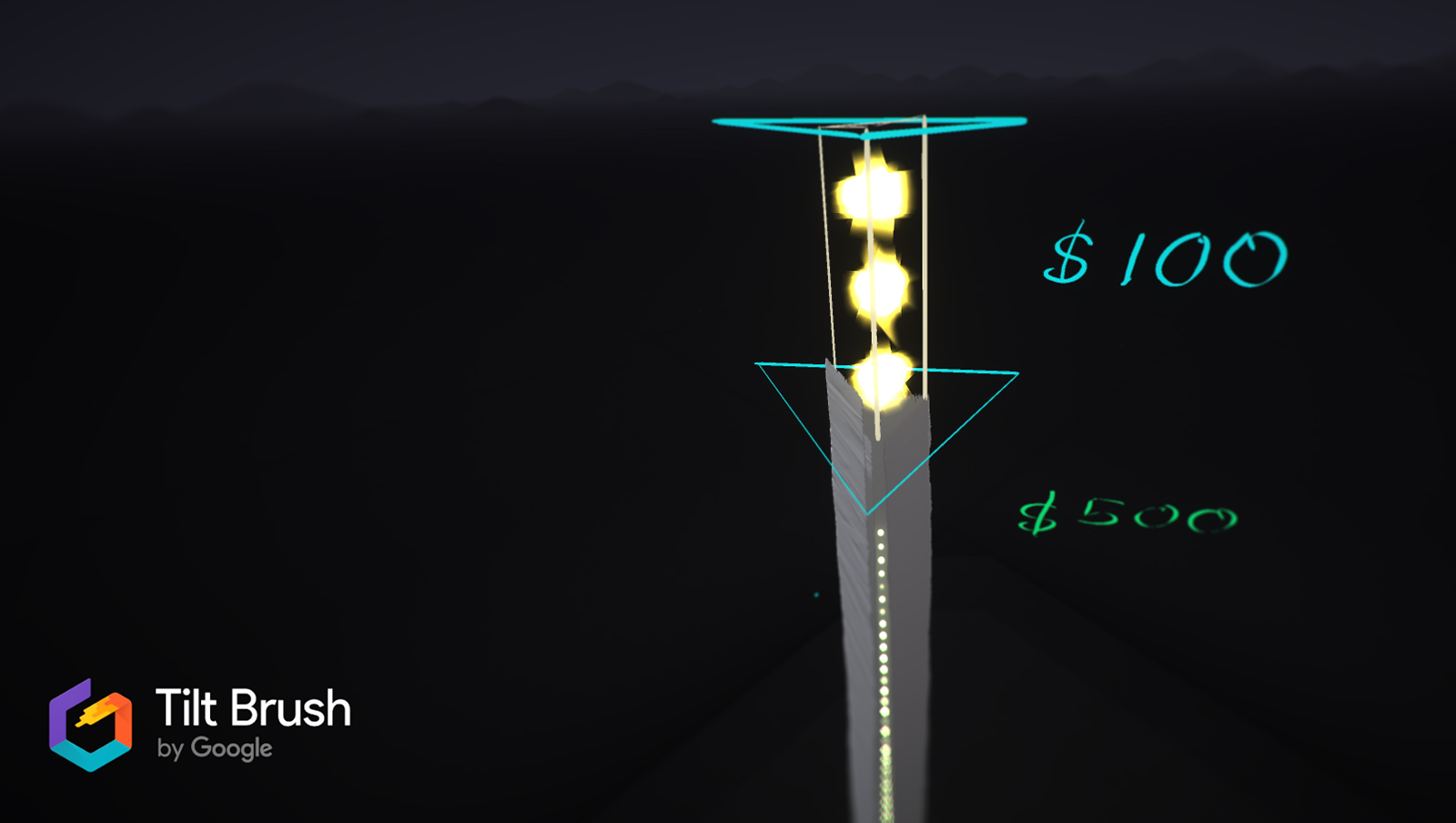
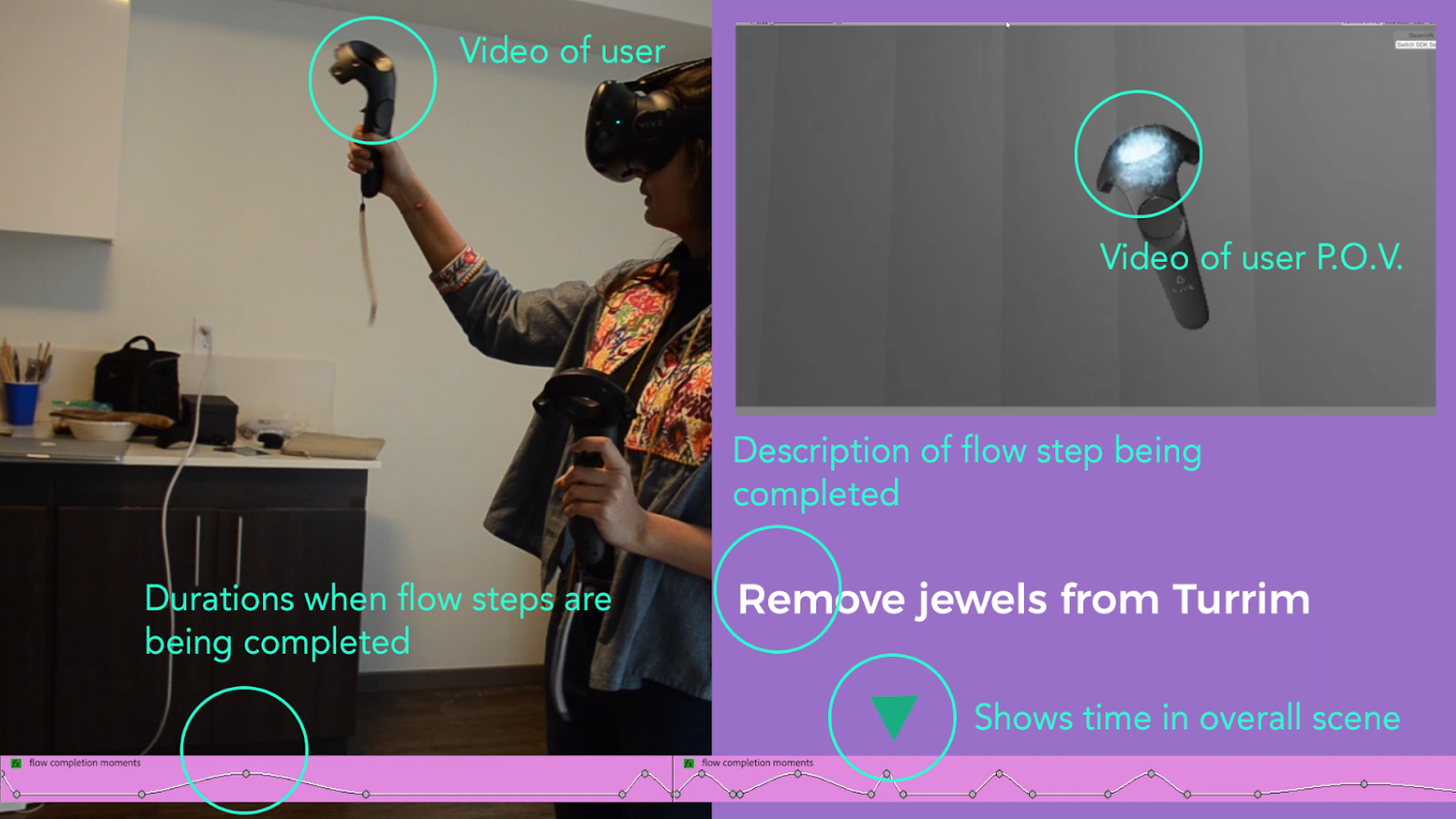
Look up
We began to design inspired by traditions of transcendent architecture, and created a “skyspace” environment. Users could look up to enjoy distance, scale, and a glimpse of sky. Over time, this vertical space would fill with the accomplishments of the user; represented as glowing spheres that accumulated on a weekly basis.
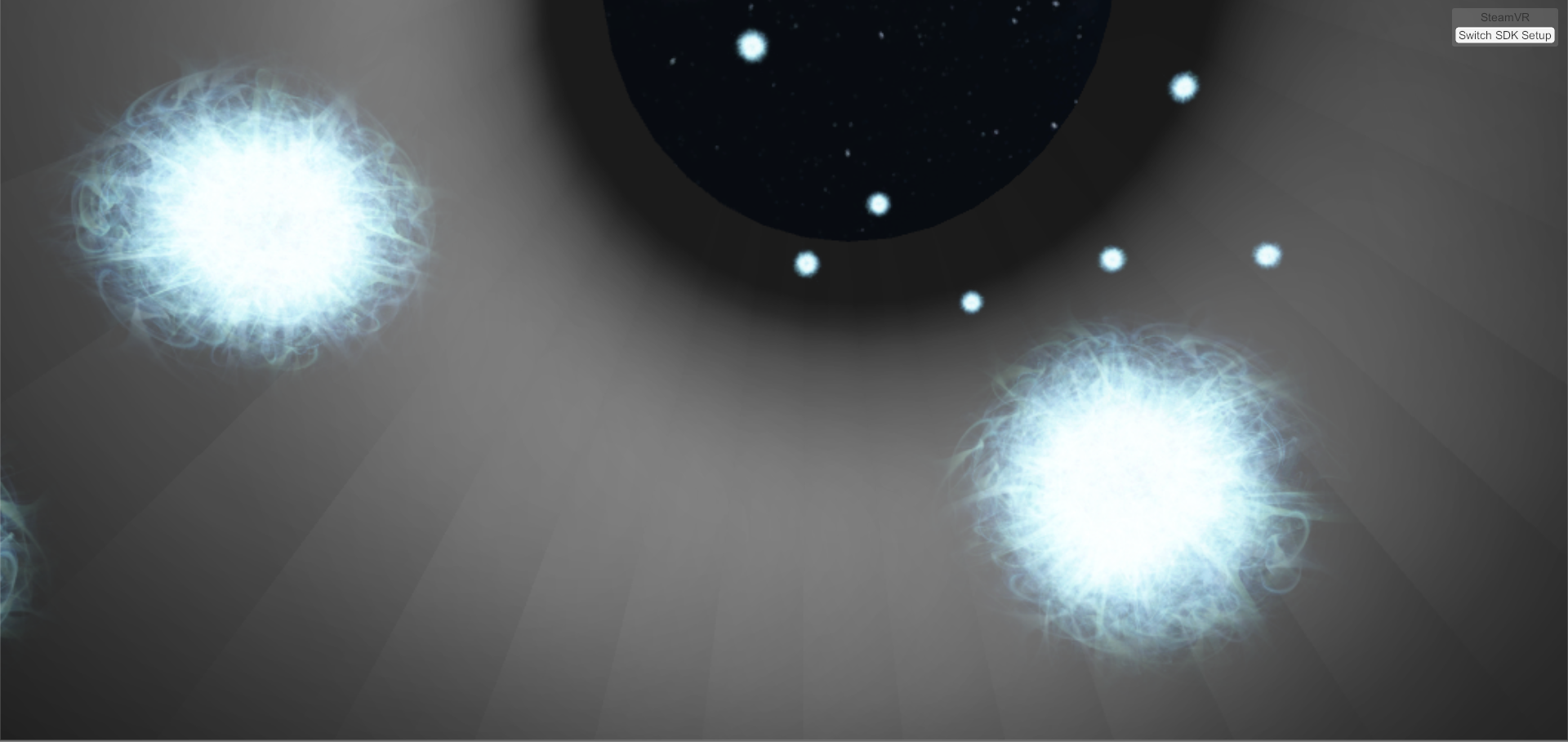
Towers
“Turrim” is latin for “tower”. We used towers not only for our environment, but also as 3D representations to model the week’s spending and budget categories. Individual budget “Turrims” were human-scale, intuitively adjusted by hand, and had a triangular form factor to improve their readability in 3D space.
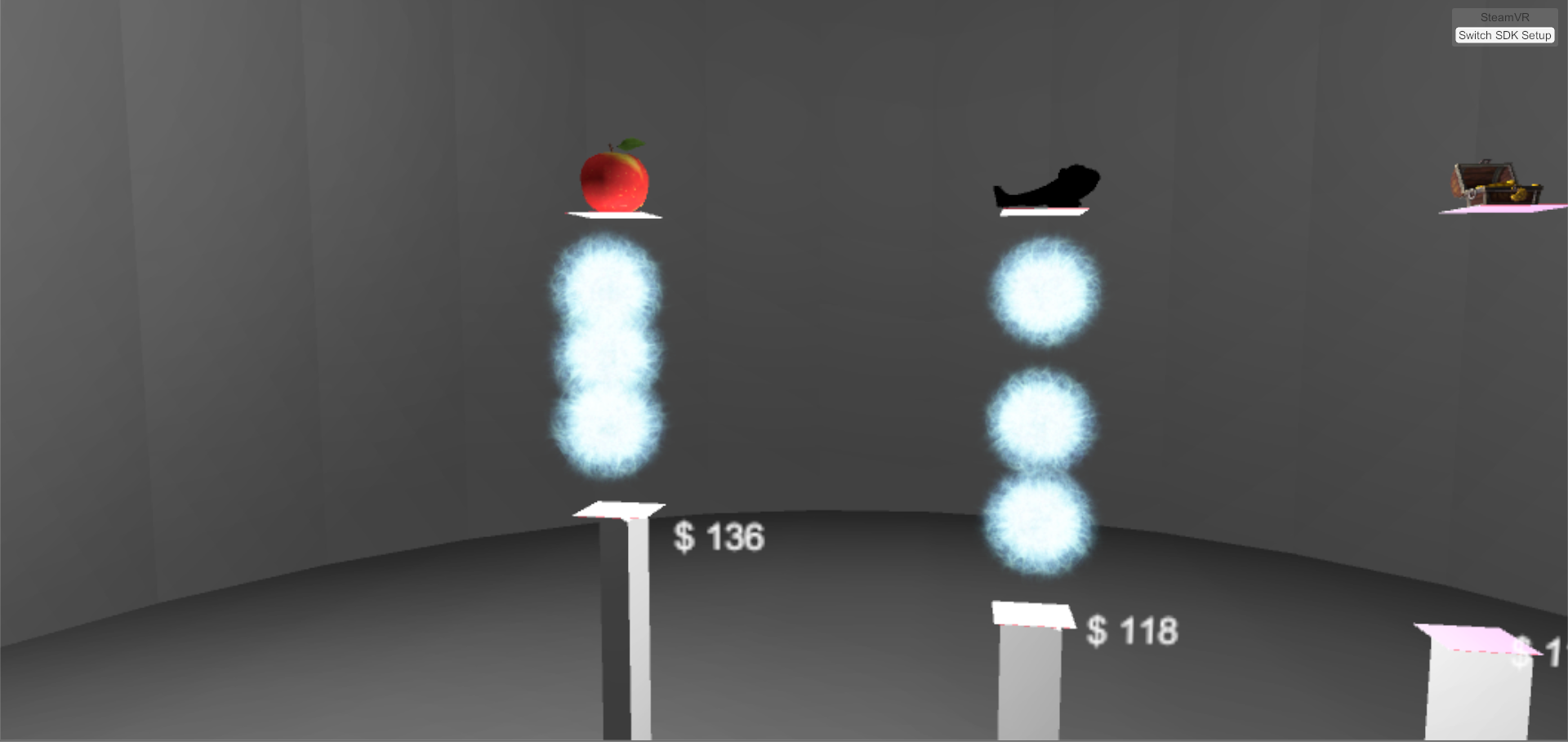
Spheres
We based “turrim” on positive habit reinforcement, rather than the accumulation of money. Each week, users earn glowing spheres based on how well they met their previous goals. Regardless of the amount of money in their budget, the numbers of spheres achieved remains proportional to the difference between goals and spending.
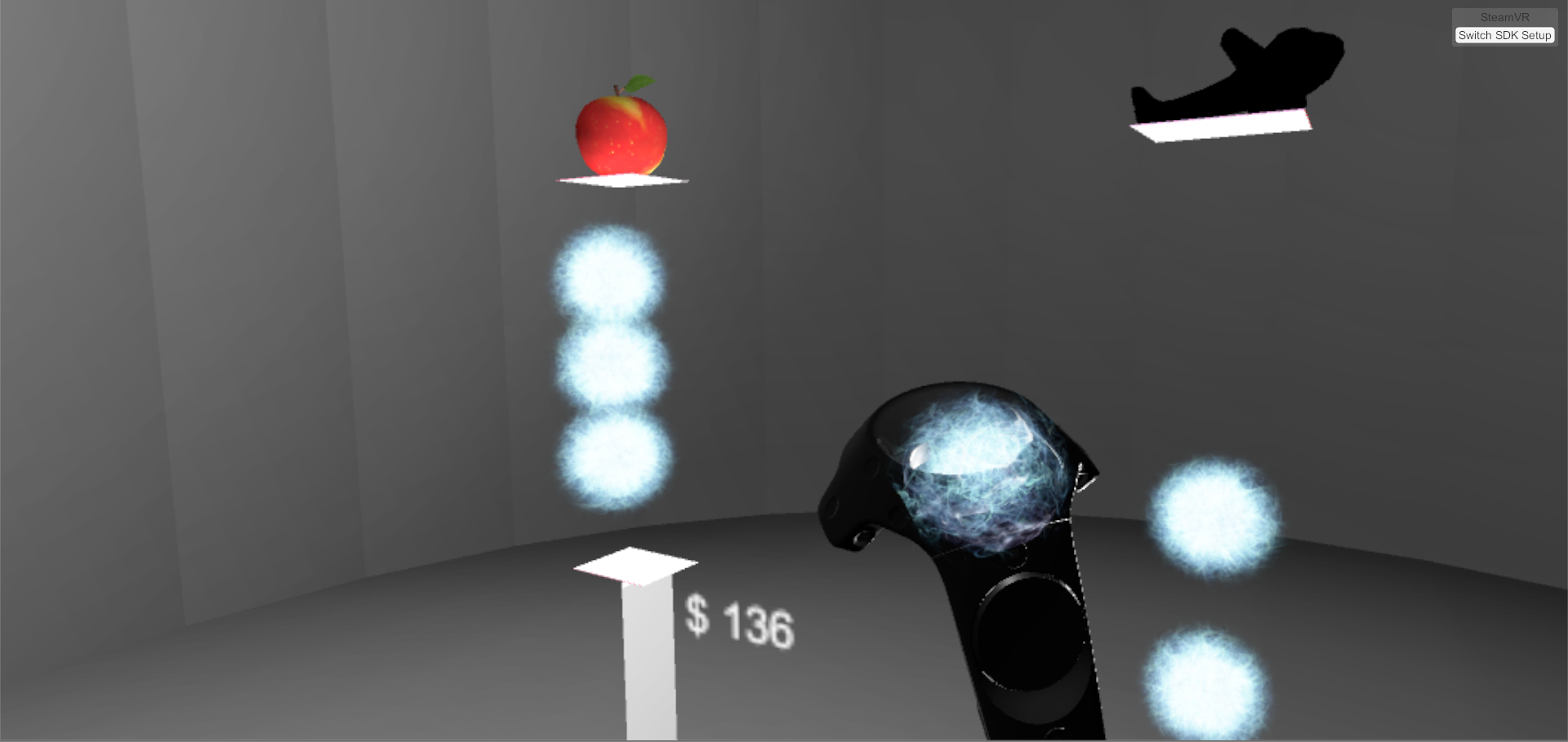
Interact
Users remove each sphere individually from the previous week’s budgets. Handling and arranging these glowing objects one by one throughout the space unlocks the next week’s budgets, and provides time to reflect on what was achieved. Unmet goals have no negative consequence - users simply won’t receive as many spheres for that week.
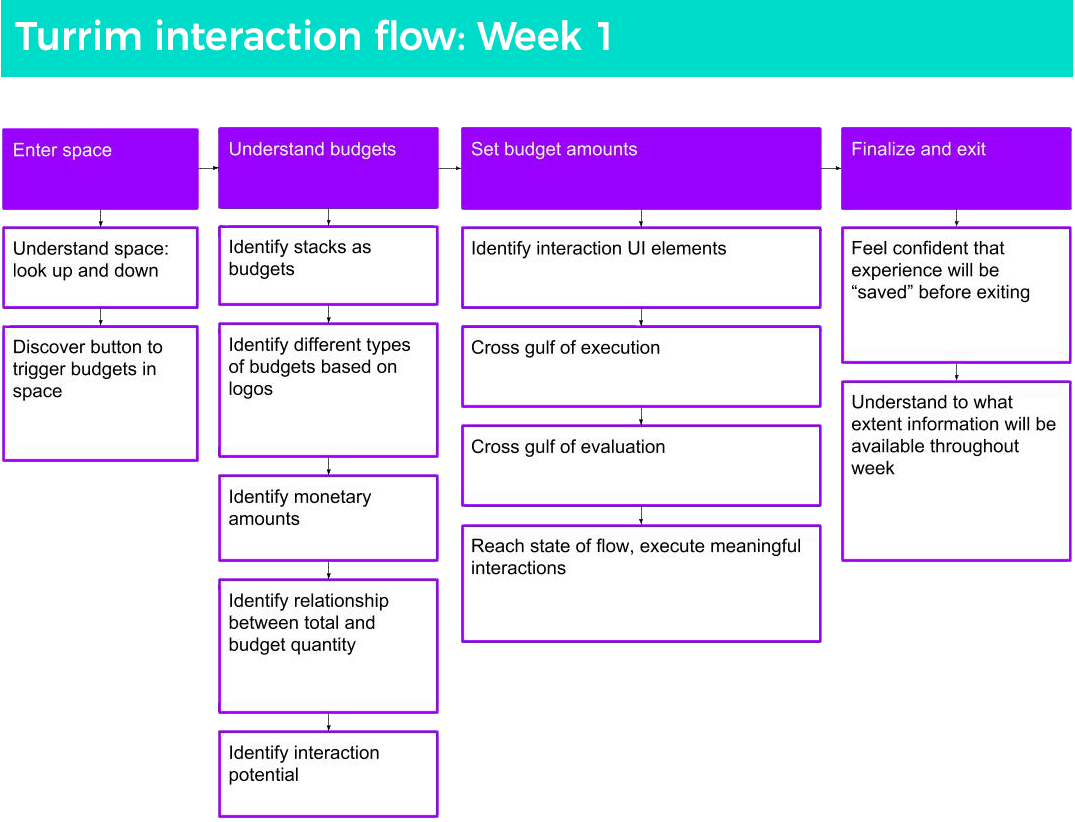
Budget
As users adjusted the height of individual budgets, a circular floor visualization showed the relationship between total budgets and available funds. Users only saw this total when they looked down.
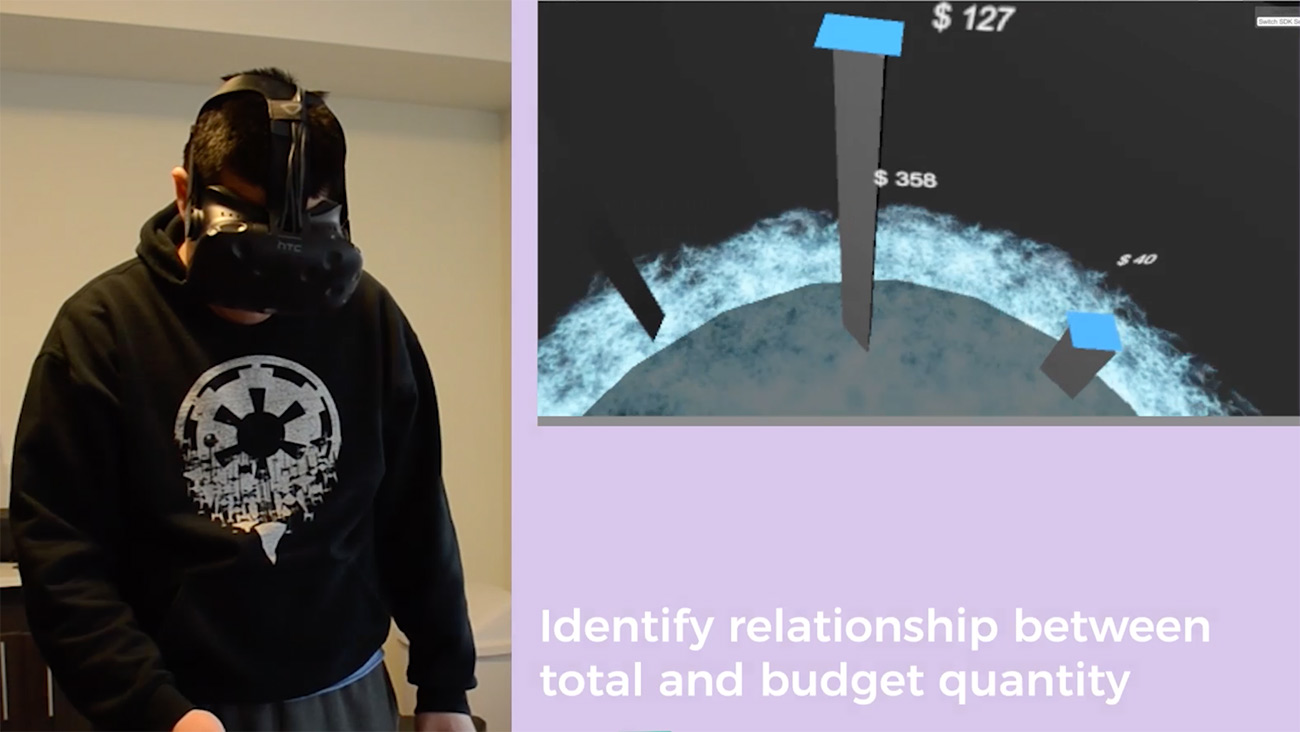
Build
Each week, new spheres rise into the skyspace. Over time, the tower holds a more and more intricate constellation of accomplishments, mapping personal patterns of success over time. As users build their financial habits, they build their sky.
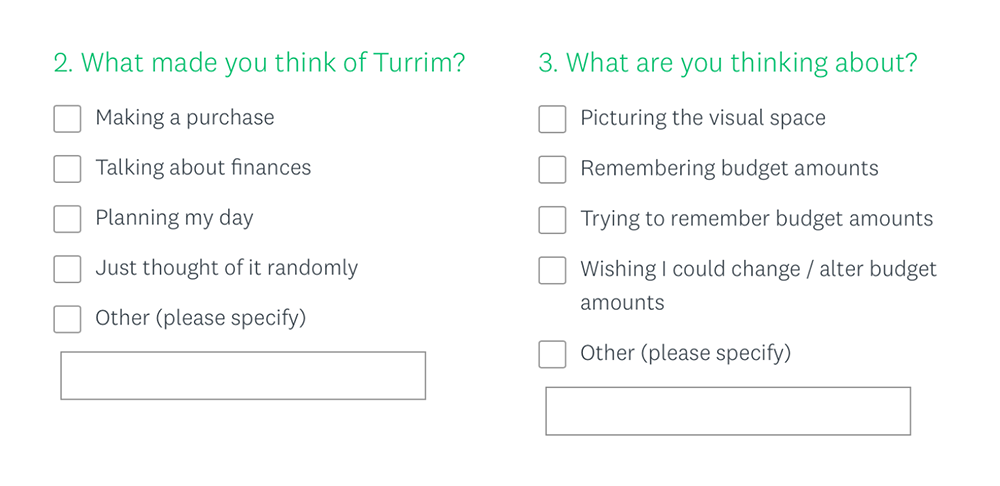
Next step
We’re currently expanding Turrim functionality to allow users to visualize and move through their patterns over time, and to customize their budget categories.

Tools
HTC Vive
Unity
C#
TiltBrush

Tactics
Sketching
Video keyframe analysis
Think-aloud protocol
Interaction flows

Projects
| © Sarah Outhwaite, 2021 |

